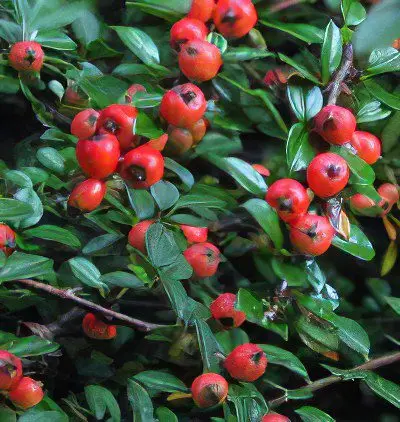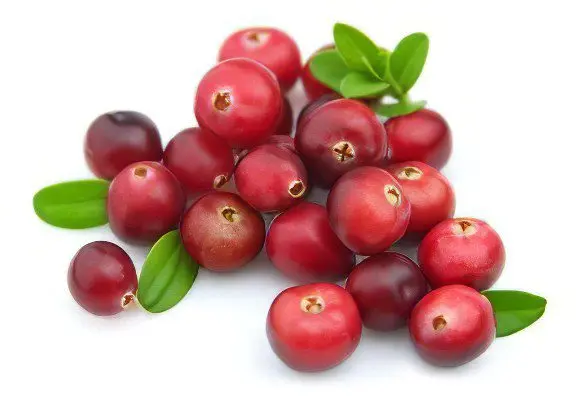Contents
Useful properties and use of bearberry
Botanical characteristics of the bearberry

bearberry – an evergreen shrub of the heather family. The shade of the stem directly depends on the age of the plant: for example, young stems are bright green, biennial stems are yellowish-brown, and the oldest stems are covered along the entire length with corky dark brown bark. The creeping stem is strongly branched, can reach a length of two meters.
The leaves are small, leathery, entire, alternate, short-petiolate, thick, oblong-ovate. The flowers are collected in terminal drooping racemes, on short pedicels, painted in a pale pink hue. The fruit is a berry-like drupe with five seeds, bright red. The flowering period of the bearberry falls on May-June, the fruit ripening period – in July-August.
The natural distribution area of the bearberry is the northern zone of the European part of Russia, Western and Eastern Siberia and the Western Caucasus. This shrub grows in pine and deciduous forests, on seaside dunes, sandy places and rocks.
Useful properties of bearberry
In folk medicine, the aerial part of this medicinal plant, the leaves, has been used for many decades. The collection of medicinal raw materials can take place in two stages: from spring to summer, overwintered leaves are collected, and at the end of summer, new grown leaves. Shoots with medicinal raw materials are carefully cut with a knife (pulling out is not allowed), after which brown (old) leaves are sifted.
Drying of shoots with leaves is carried out in a thin layer in the open air. At the end of the drying stage, the branches are threshed and sieved through a sieve (to screen out the shoots).
The chemical composition of bearberry leaves contains arbutin, free hydroquinone, quercetin, tannins, ascorbic acid (vitamin C), essential oils, organic acids (quinic, formic, ellagic, ursulic, gallic).
Infusion, tincture and decoction of bearberry has a pronounced disinfectant, astringent, anti-inflammatory, enveloping, analgesic, antimicrobial and diuretic action.
Application of bearberry
In folk medicine, medicinal infusions and decoctions, which include bearberry, are used for edema, chronic colitis, diathesis, urolithiasis, purulent wounds, chronic nephritis and nephrosis, cystitis, urethritis, diabetes, pulmonary tuberculosis, chronic constipation, uterine bleeding, gastritis, heartburn and rheumatism.
A decoction of a medicinal plant can be applied both externally and locally (for diathesis, ulcers and purulent wounds) directly on the area of localization of the inflammatory process. A powder obtained from dried bearberry leaves is also used topically as an antiseptic and wound healing agent.
Bearberry decoctions

Recipe number 1. 1 tablespoon of dry medicinal raw materials is poured into 200 ml of boiling water, then infused in a boiling water bath for 15 minutes. The resulting broth is allowed to cool for 45 minutes at room temperature, after which the broth is filtered into a clean dish. If necessary, the resulting volume is adjusted to 200 ml with purified water and mixed well. Take a decoction of a bearberry for chronic and acute kidney diseases, 1/2 cup 3-4 times a day.
Recipe number 2. 1 tablespoon of dry medicinal raw materials is poured into 200 ml of boiling water, after which it is insisted on a boiling water bath for 30 minutes. Then the resulting broth is filtered into a clean container; if necessary, the resulting volume of the broth is adjusted with purified water to 200 ml. Take a decoction of 15 ml (1 tablespoon) 3-4 times a day for diseases of the gastrointestinal tract.
Recipe number 3. 1 tablespoon of dry bearberry leaves is poured into 200 ml of purified water at room temperature, then put in a boiling water bath for 20 minutes. The resulting broth is filtered into a clean container and I take 15 ml 3-4 times a day for nephritis.
Recipe No. 4. 5 g of dry medicinal raw materials are poured into 100 ml of purified water at room temperature, after which the solution is placed in a boiling water bath for 15 minutes. Then the decoction is filtered and taken 15 ml 3-4 times a day for inflammation of the bladder.
Bearberry tincture
1 tablespoon of dry bearberry leaves is poured into 200 ml of boiling water and infused at room temperature for 2–2,5 hours, after which the resulting infusion is filtered into a clean bowl. Infusion is taken 100 ml 4-5 times a day for rheumatism.
Bearberry tincture
20 g of dry medicinal raw materials are poured into 100 ml of 40% ethyl alcohol, then the composition is allowed to infuse for 14 days in a dark place, periodically stirring and shaking the tincture. After the due date, the tincture is filtered into a clean container and taken 15 drops 3 times a day for nephritis.
Contraindications to the use of bearberry
Like most medicinal plants, bearberry has its own number of contraindications for use. Healing infusions and decoctions of bearberry leaves are strictly contraindicated for use by pregnant and lactating women, children under the age of 12, with urolithiasis, glomerulonephritis, with potassium deficiency and individual intolerance (allergic reaction).
We should not forget that bearberry medicines are not recommended to be taken for more than 7 days, and the number of treatment courses per year should not exceed five.









